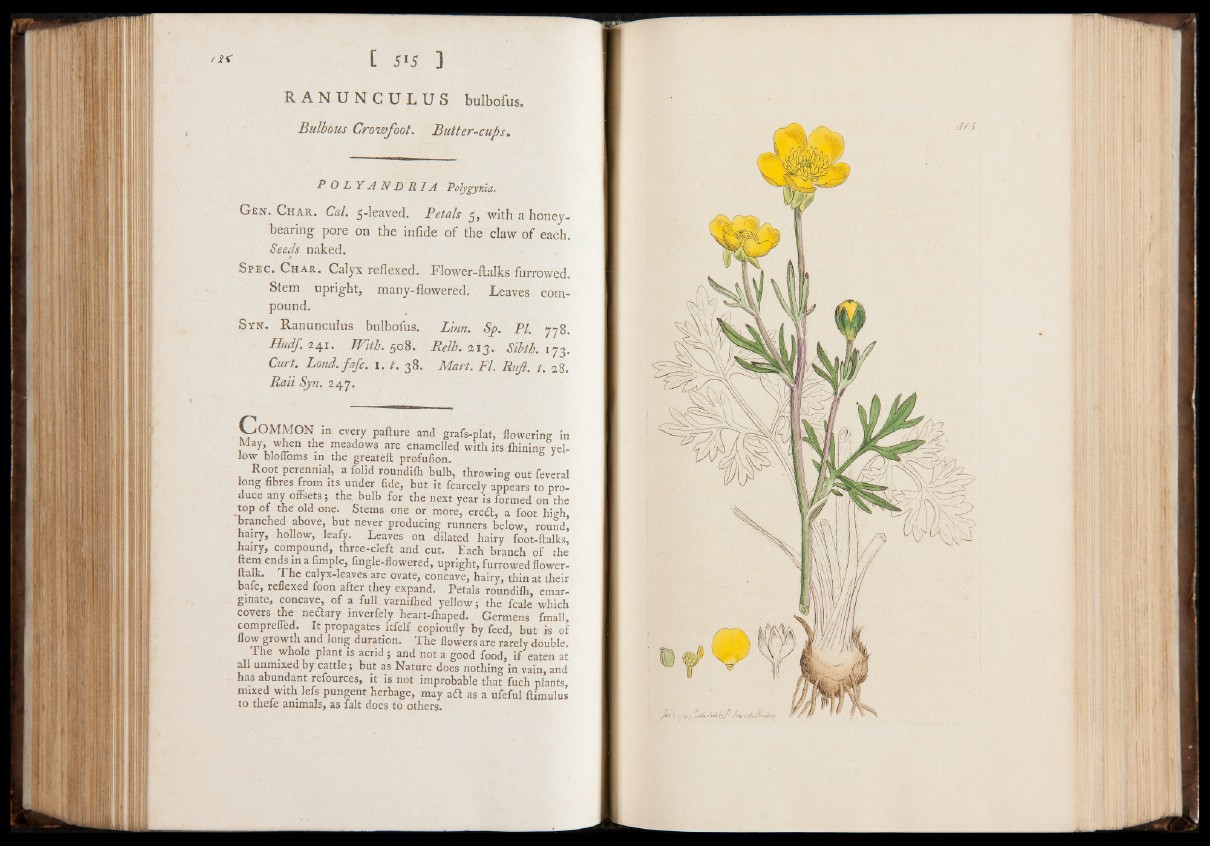
R A N U N C U L U S bulbofus.
Bulbous Crowfoot. Butter-cups.
Polygynia.
Gen. Char. Cal. 5-leaved. Petals 5, with a honey-
bearing pore on the infide of the claw of each.
Seeds naked.
Spec. Char. Calyx reflexed. Flower-ftalks furrowed.
Stem upright, many-flowered. Leaves compound.
Syn. Ranunculus bulbofus. Linn. Sp. PL 778.
Hudf.241. With. 508. Relb. 2,13. Sibth. 173.
Curt. Lond.fafc. 1. t. 38. Mart. Fl. Ruß. t. 28.
Rail Syn. 247.
C o m m o n in every palture and grafs-plat, flowering in
May, when the meadows are enamelled with its Ihining yellow
blofloms in the greateft profufion.
Root perennial, a folid roundifh bulb, throwing out feveral
long fibres from its under fide, but it fcarcely appears to produce
any offsets; the bulb for the next year is formed on the
top of the old one. Stems one or more, ereft, a foot high,
branched above, but never producing runners below, round,
hajry, hollow, leafy. Leaves on dilated hairy foot-ftalks,
hairy, compound, three-cleft and cut. Each branch of the
ftem ends in a Ample, fingle-flowered, upright, furrowed flower-
}ta‘k- j he calyx-leaves are ovate, concave, hairy, thin at their
bafe, reflexed foon after they expand. Petals roundifh, emar-
gmate, concave, of a full varnifhed yellow; the fcale which
covers the neftary inverfely heart-fhaped. Germens fmall,
compreffed. It propagates itfelf copioufly by feed, but is of
flow growth and long duration. The flowers are rarely double.
The whole plant is acrid; and not a good food, if eaten at
all unmixed by cattle; but as Nature does nothing in vain, and
has abundant refources, it is not improbable that fuch plants,
mixed with lefs pungent herbage, may adt as a ufeful flimulus
to theie animals, as fait does to others.
'Jan -*/ ,yq g jtfjfßsÄei by J ' ftfuiccfyJt&ii